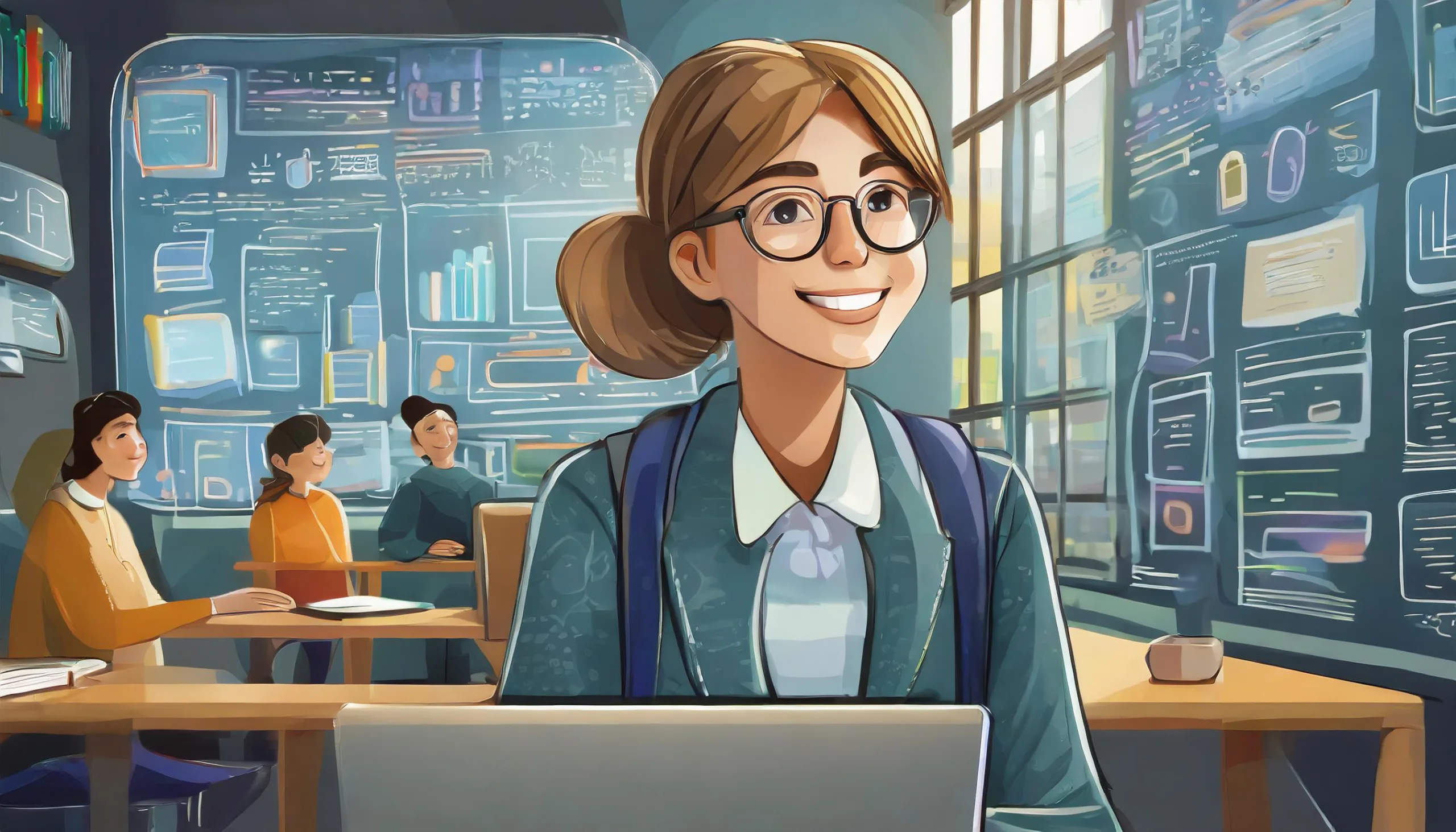Writing portfolios with THspaces
Portfolios allow students to reflect on content, deepen their knowledge, and further develop their writing processes. THspaces helps teachers to structure portfolio work, make results visible, and encourage student exchange.

Context: What is a learning portfolio?
The learning portfolio supports students in “contextualizing knowledge in factual contexts and critically questioning it with the help of systematic reflection of their own learning processes” (Quellmelz & Ruschin, 2013, p. 19).
The core of a learning portfolio should be the reflection of students’ learning progress. Essentially, the learning portfolio is a collection of selected documents, media, or work assignments that students can use to illustrate their own learning progress and the skills they have acquired.
A portfolio can also serve as a medium for reflecting on one’s own writing process. For example, a portfolio can be used as an alternative to the classic term paper. Instead of one text at the end of the semester, students produce several texts over the course of the semester and submit them together as a portfolio, if necessary with an additional reflection on their own writing performance and process.
Problem: Why use portfolios in teaching?
Critical thinking, personal responsibility, and the ability to cooperate are crucial soft skills in the modern working world. However, within the framework of a traditional course, such as lectures or seminars, there is little time to give students sufficient space for individual reflection. However, many teachers want to create these spaces and integrate suitable methods such as portfolio work into their courses. This allows students to reflect on their learning process during the seminar.
These portfolios, i.e., valuable results from the collaborative work, often remain inaccessible to other students. With THspaces, students can share their results and discuss them with other students and teachers. In this way, their work becomes more visible.
Please note:
A portfolio does not have to be an exam! It might as well accompany a course as an ungraded performance for in-depth learning and self-reflection.
Solution: How can portfolio work on THspaces support teaching?
As a social teaching and learning platform, THspaces creates spaces in courses to digitally accompany project-based and research-based learning and work processes (Kaliva, 2016) and thus promote collaborative but also self-directed learning.
With the help of portfolio work on THspaces, students can critically reflect on their own work results, share peer feedback with their fellow students, and exchange ideas with teachers. This promotes essential soft skills such as personal responsibility and the ability to cooperate.
Solution details: How does it work?
Experiences from teaching
To support the creation of a portfolio entry, guidelines with an outline and questions are helpful. Students can create a portfolio entry by working through the given outline and answering the individual questions. This requires a uniform structure, which can also facilitate the process of giving feedback. If peer feedback is used for the portfolio entries, a guideline with feedback rules and questions for the students should also be created. Both guides can be stored in a central Space, which also links all student Portfolio Spaces to ensure they are easy to find.
Review by Dr. Elisabeth Kaliva (KISD, Faculty of Cultural Studies)
HUL-ProfCast with Prof. Dr. Gabi Reinmann and Prof. Dr. Kai-Uwe Schnapp (Department of Political Science)
In the fifth episode “Comeback of the portfolio”, Prof. Dr. Gabi Reinmann talks to Prof. Dr. Kai-Uwe Schnapp about the use of the learning and study portfolio in university teaching with an excursus on the influence of generative AI in courses (German).
Any questions?
Still unsure? No problem! Teachers at TH Cologne can contact the Center for Academic Development by e-mail to arrange a consultation.
Links & Literature
Header image: Generated with Adobe Firefly



